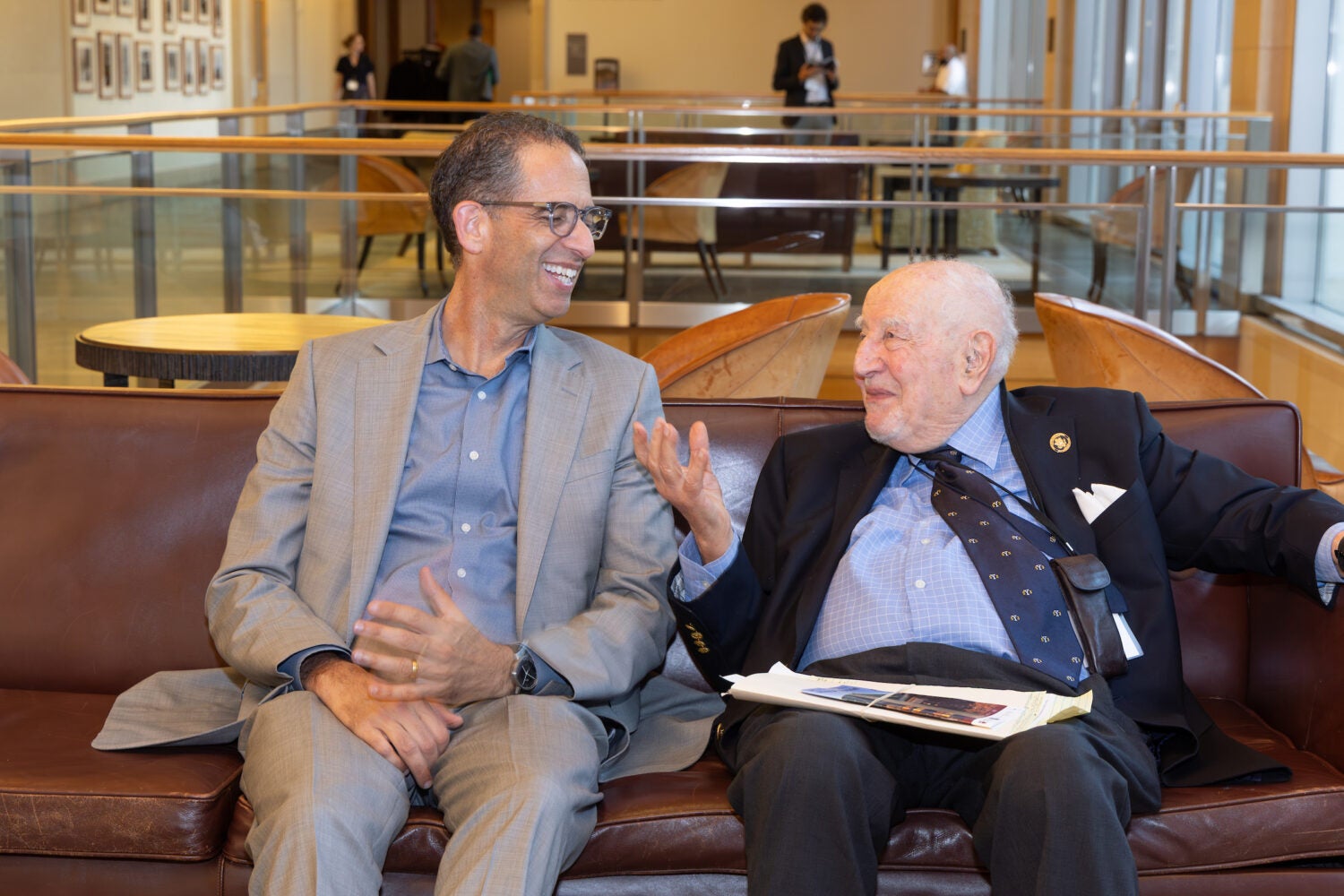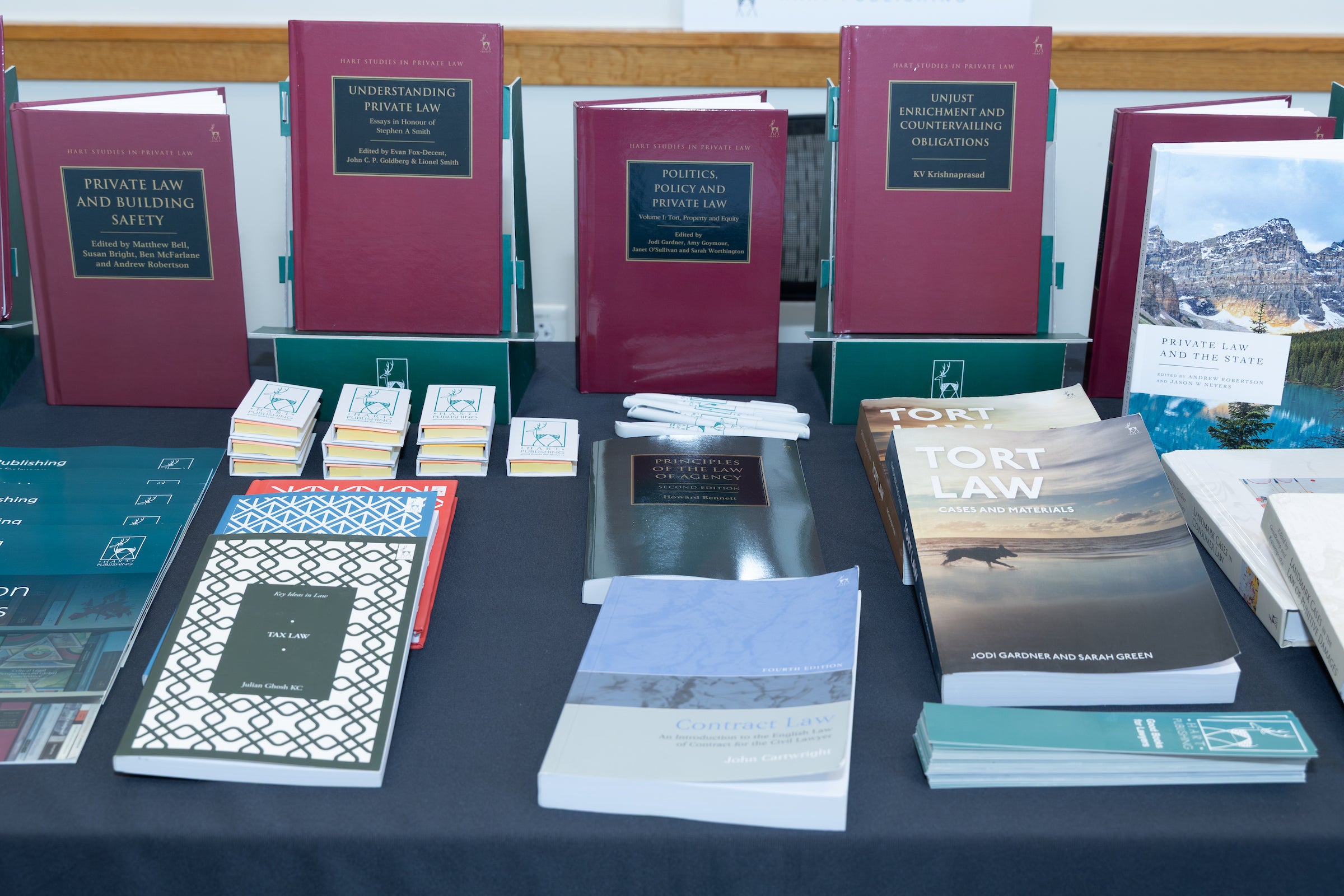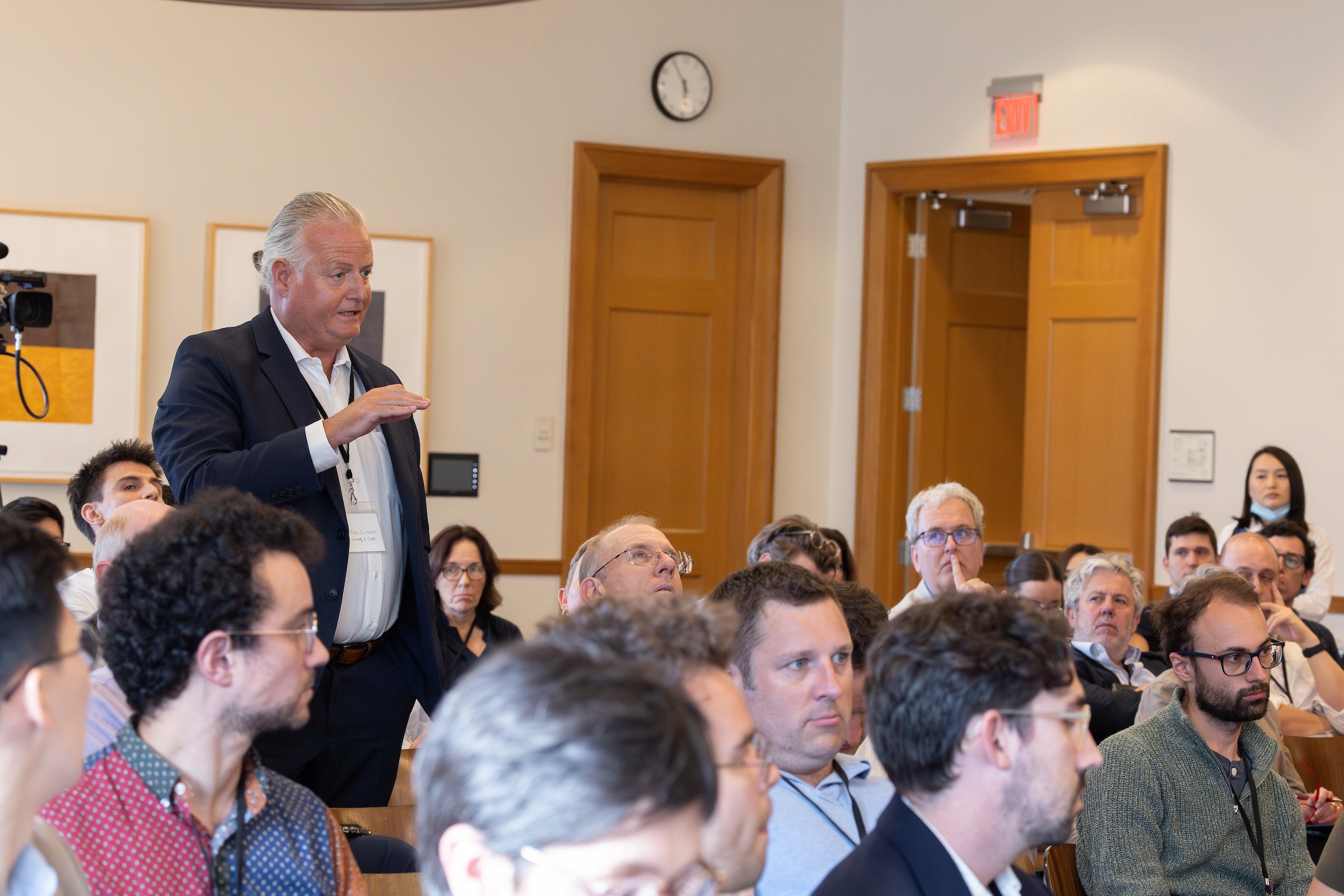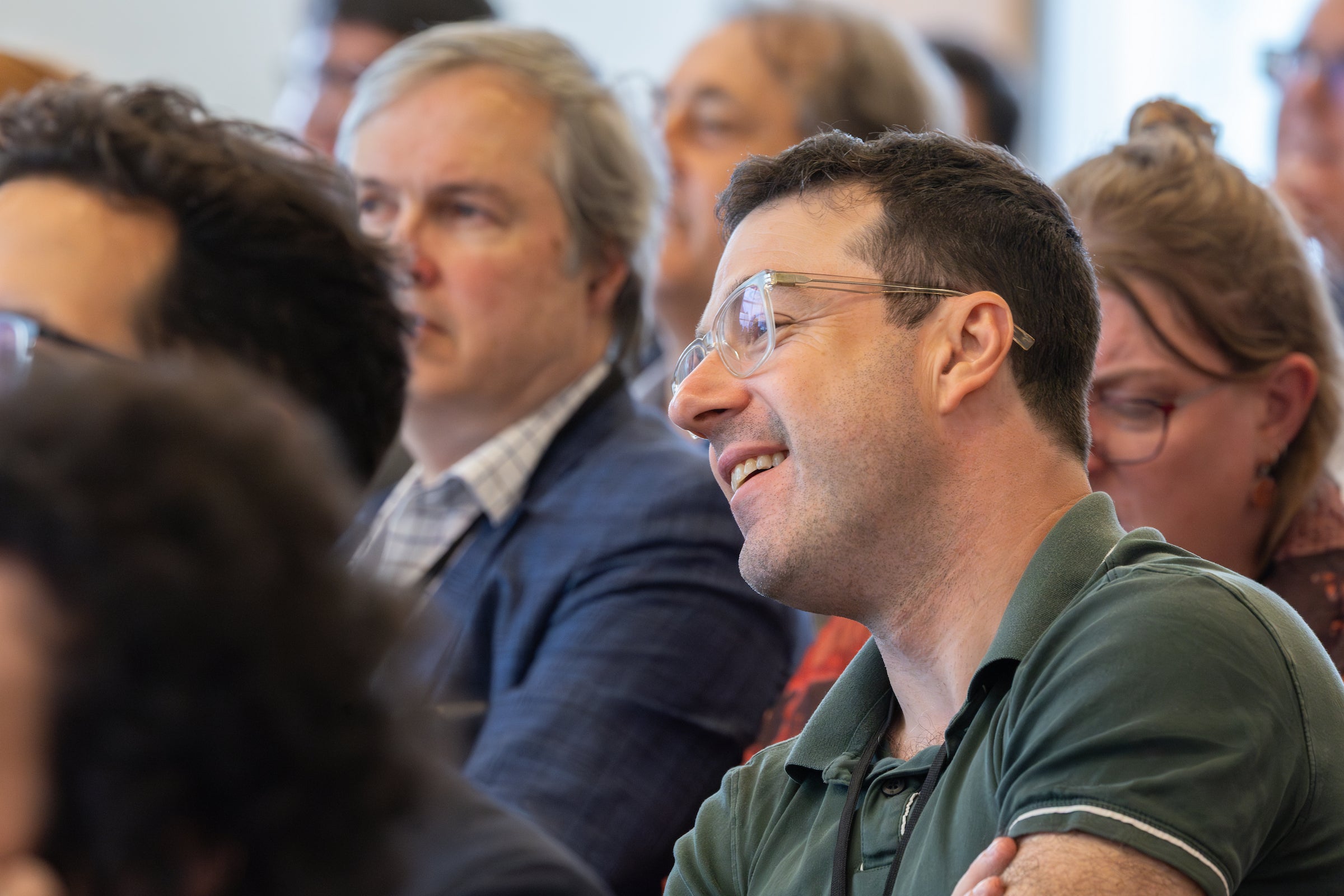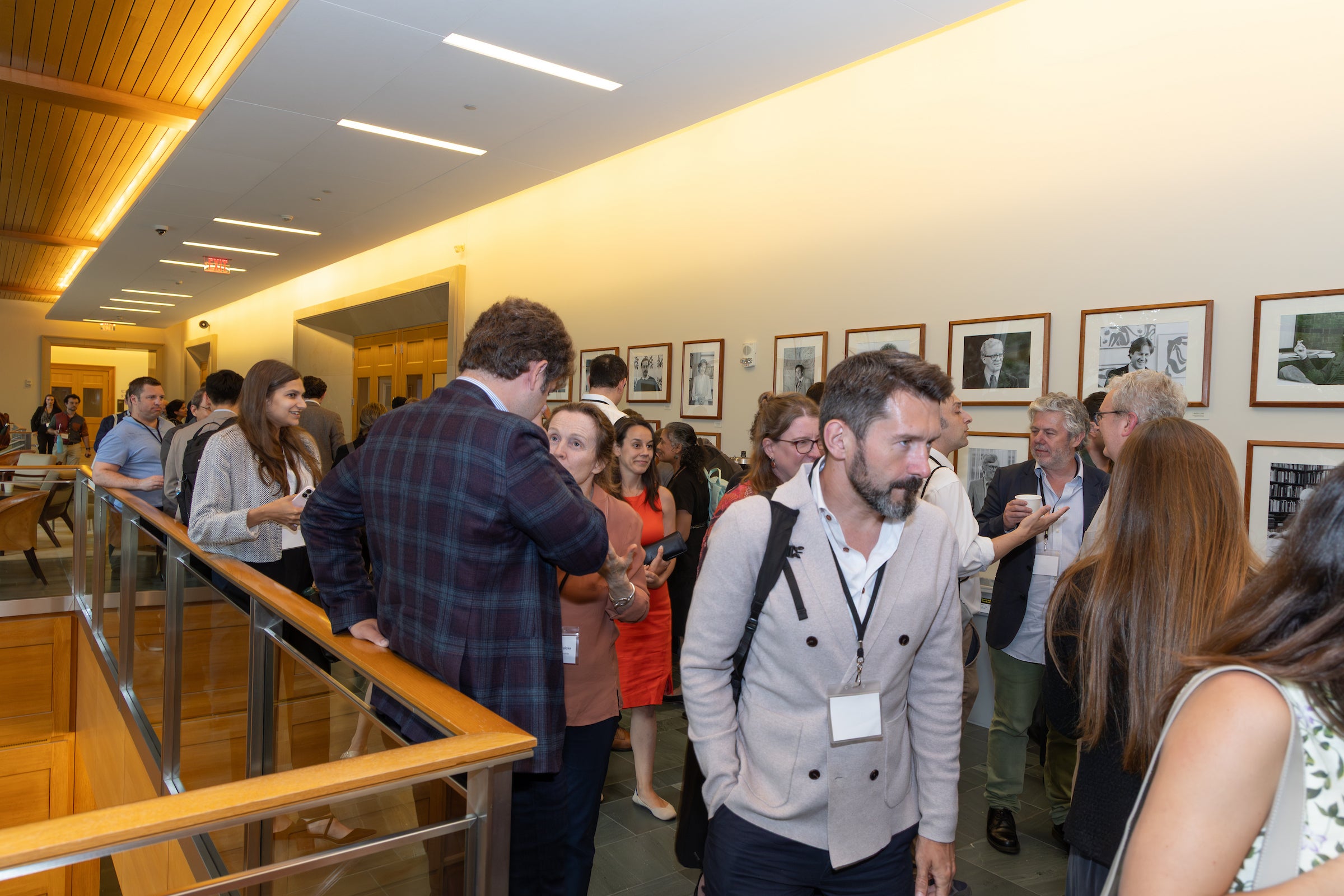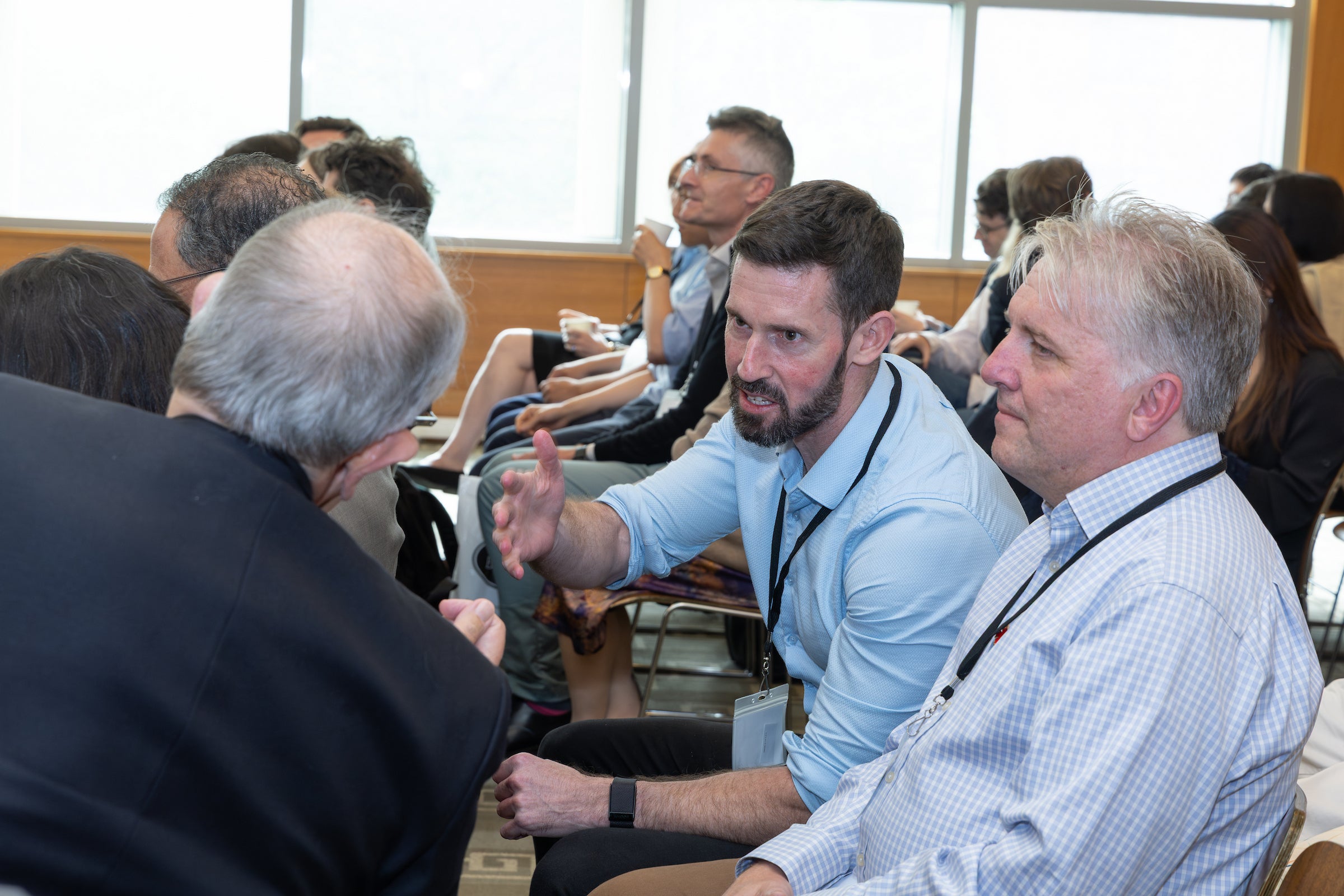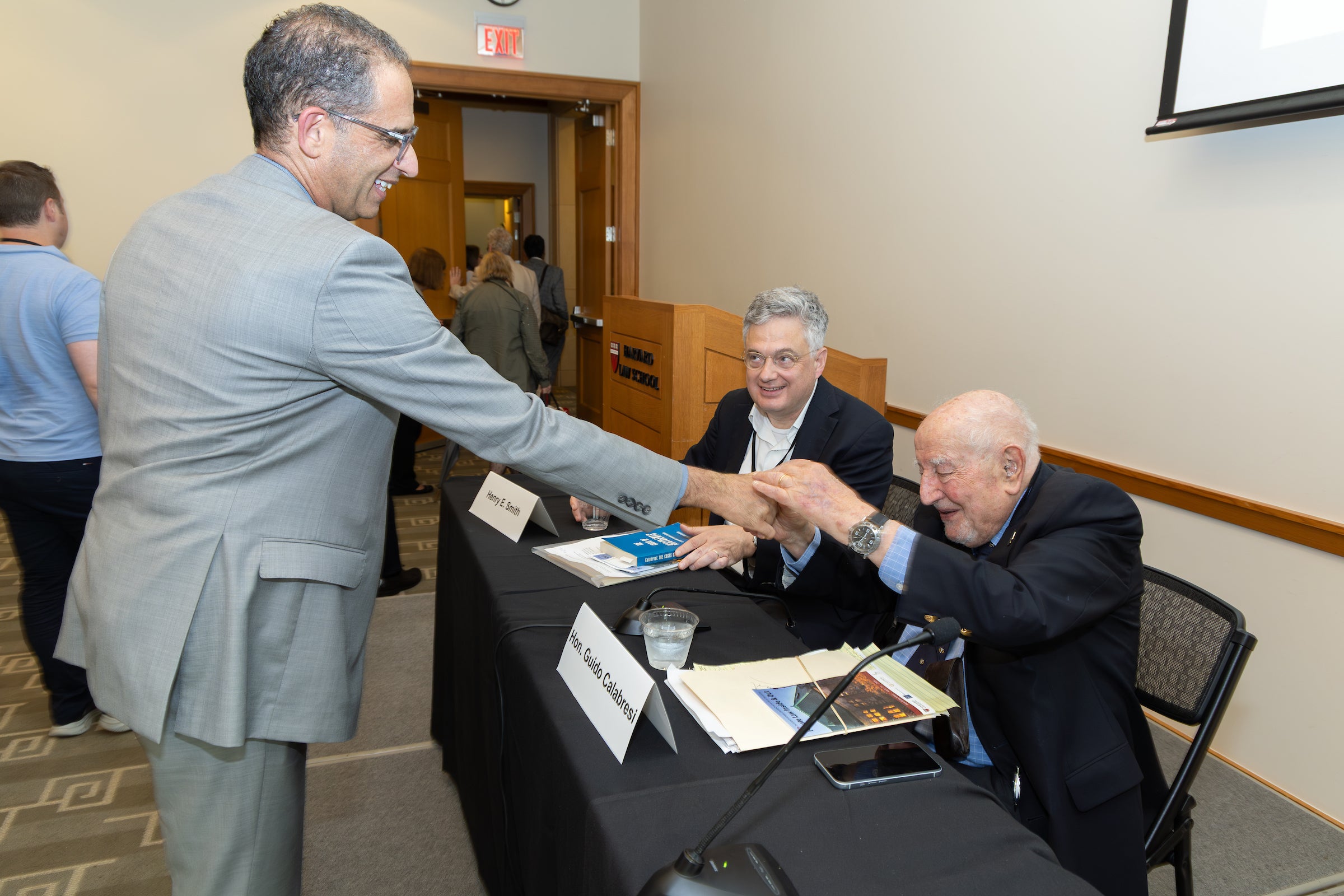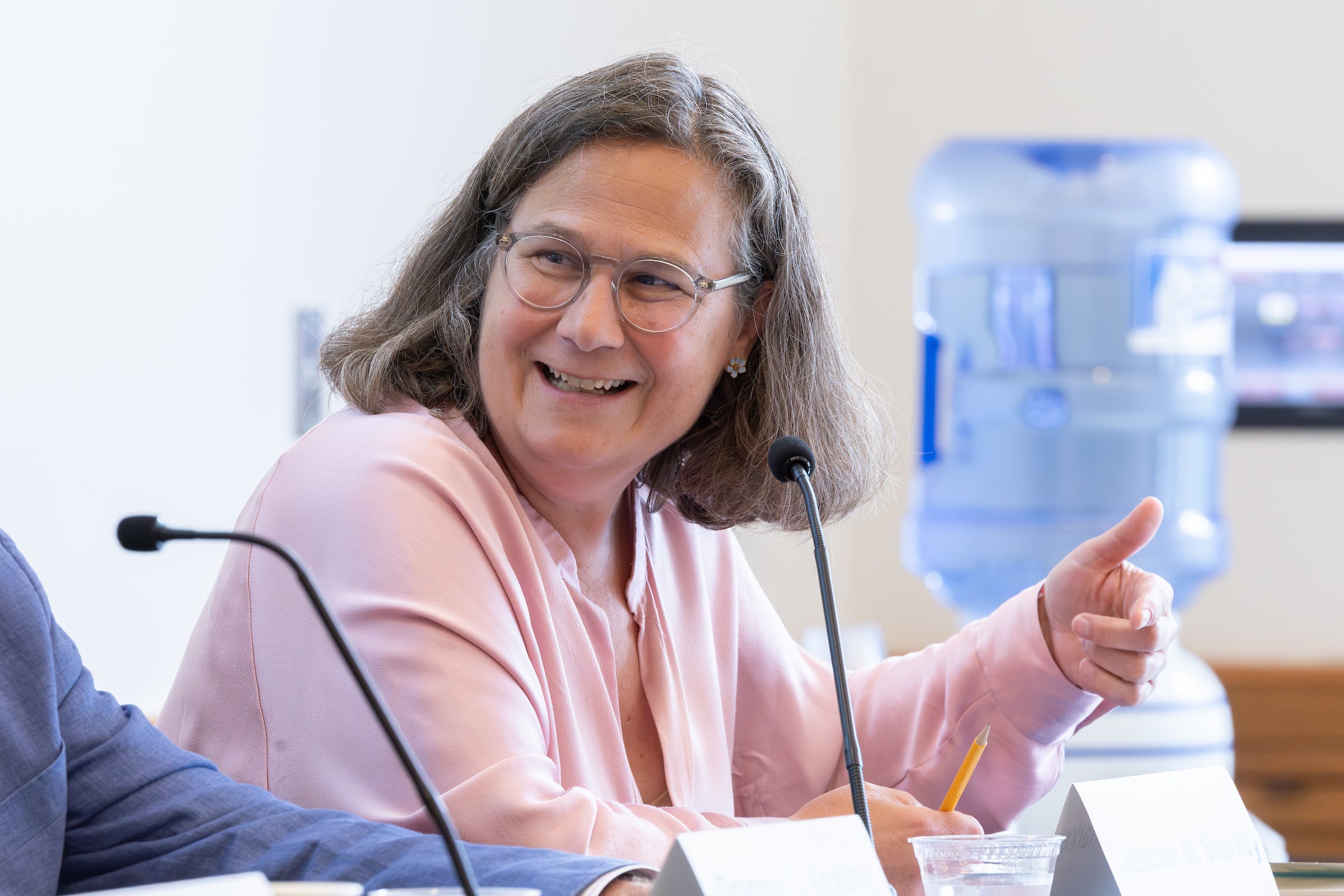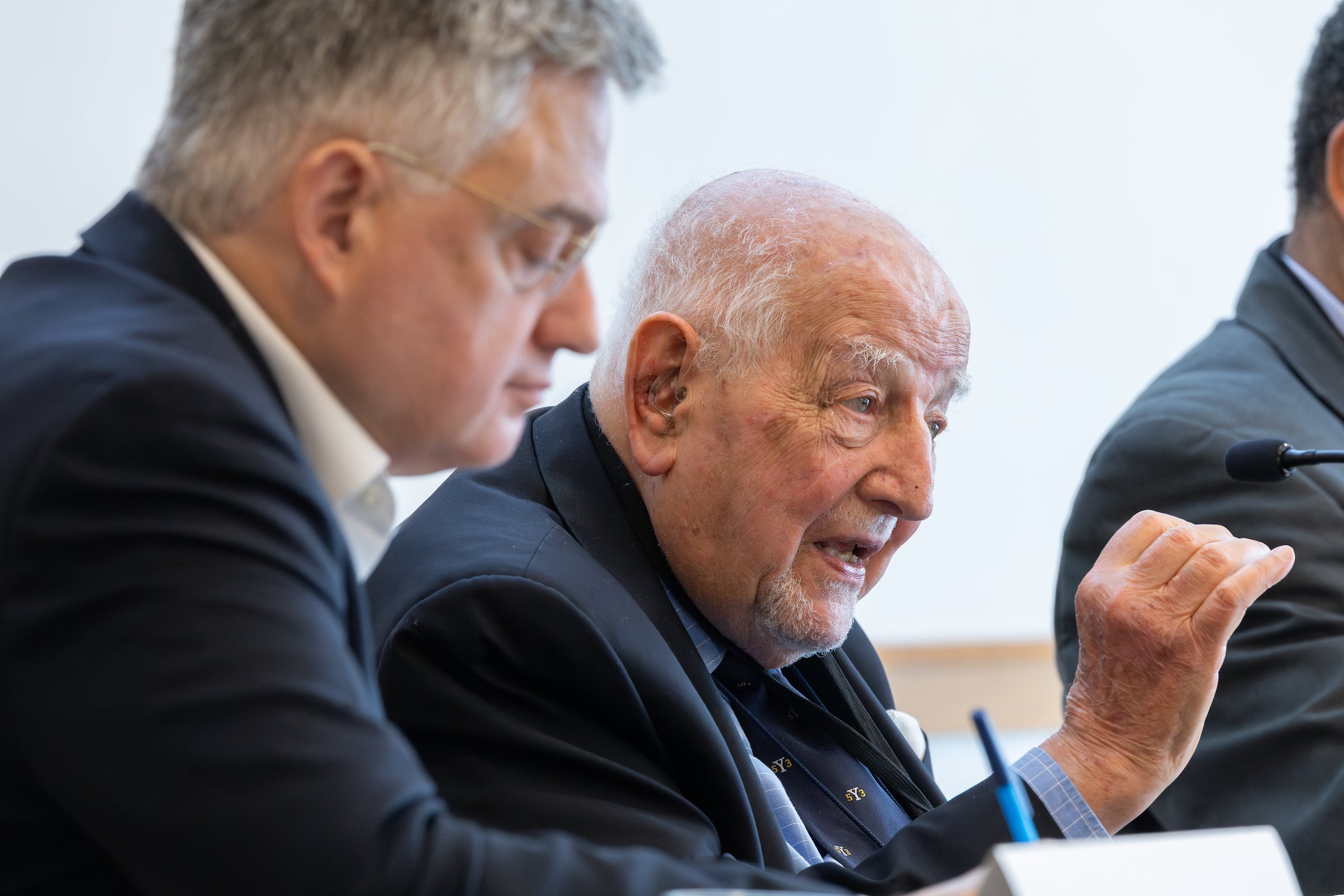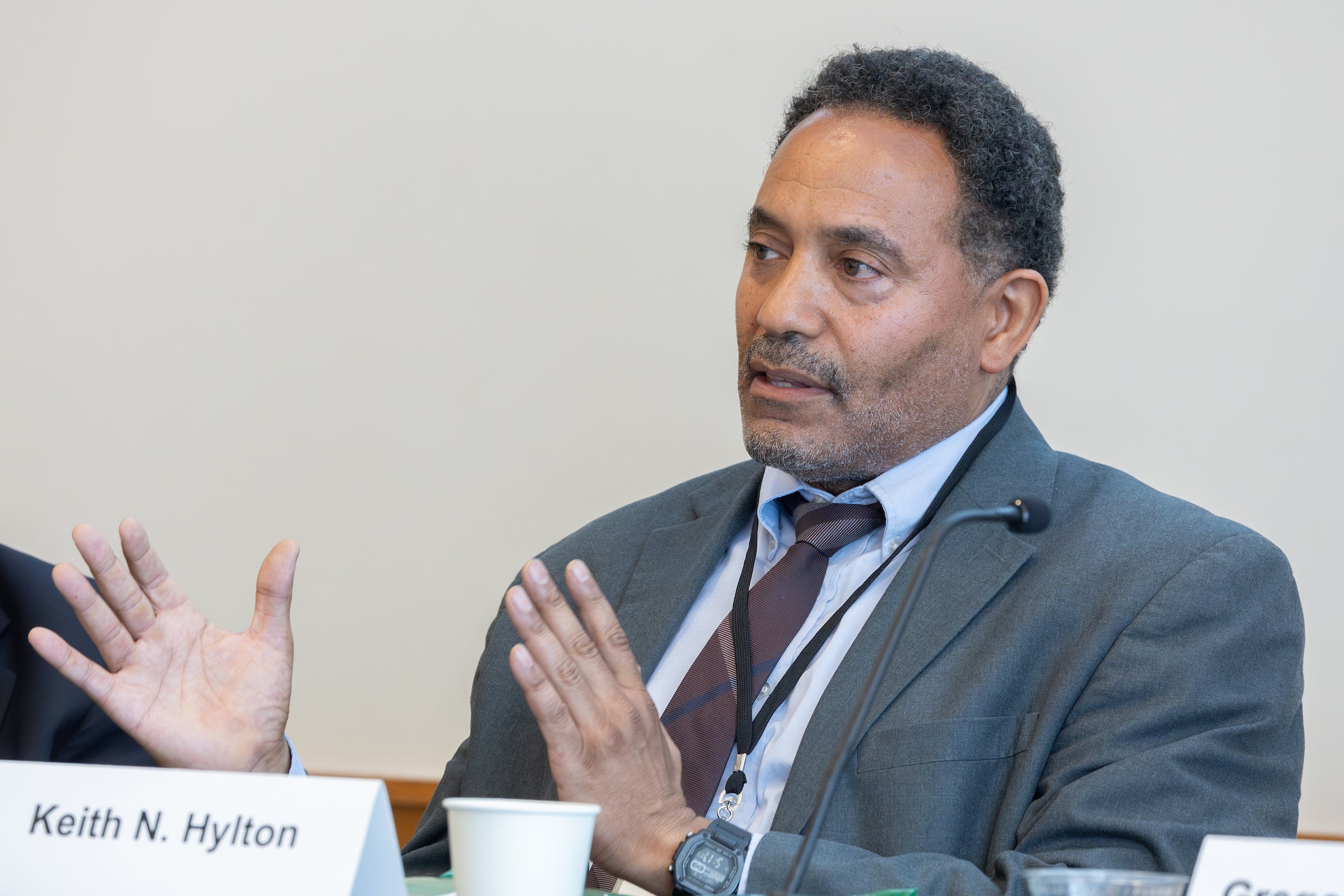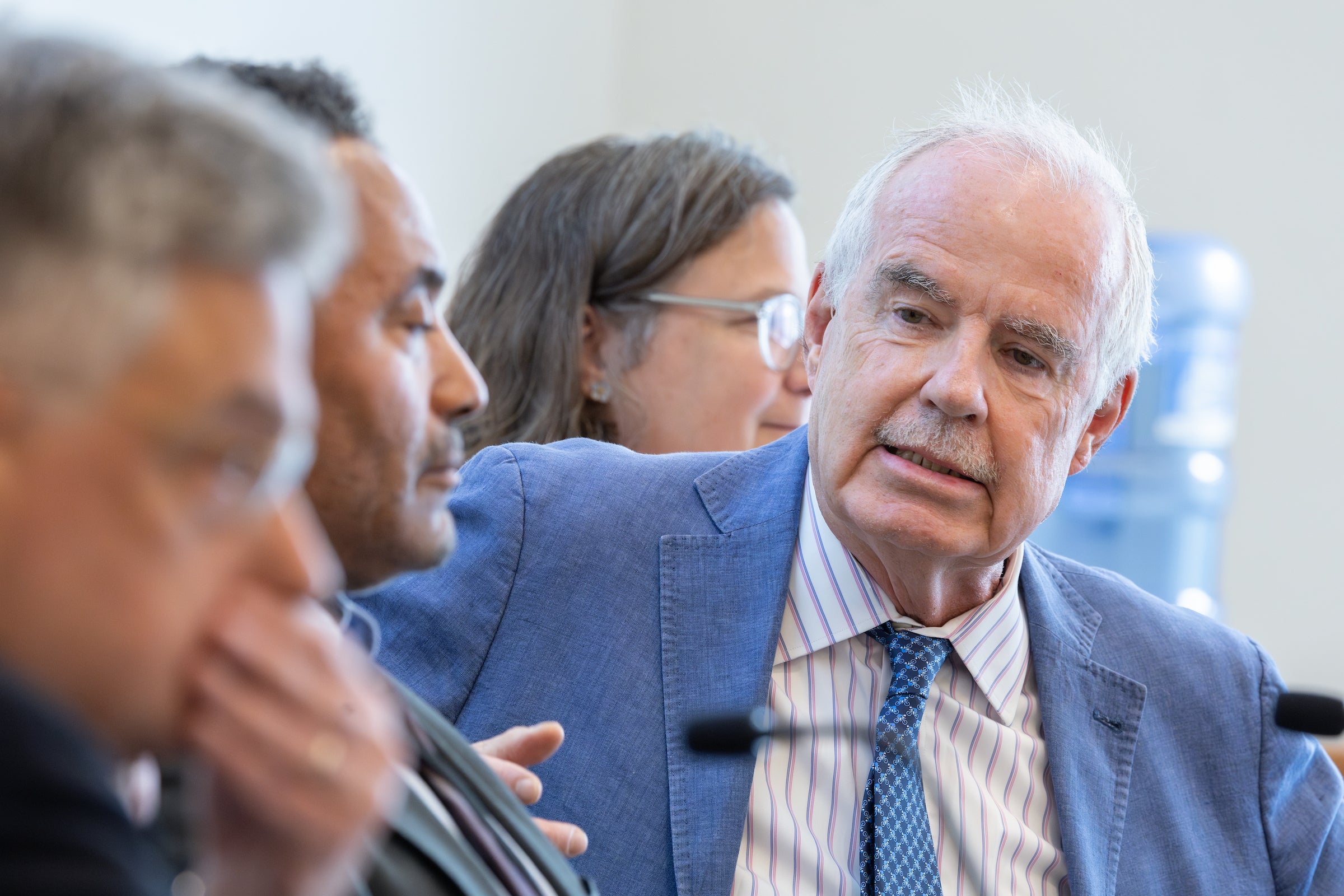This past July, Harvard Law School hosted the Eleventh Biennial Conference on the Law of Obligations, which, under the theme of “Private Law: Inside and Out,” brought together scholars and practitioners from across the common law world to discuss current issues in areas such as contracts, torts, property, equity, unjust enrichment, and private law theory.
The four-day gathering, co-hosted with Melbourne Law School, marked the first time the Obligations Conference has been held in the United States. July’s meeting, which featured more than 100 papers and presentations, is the latest in a series that originated at Melbourne Law School in 2002. Subsequent iterations have been held in Singapore, Hong Kong, Canada, and the United Kingdom.
With Professor Andrew Robertson, Director of Studies in Private Law at Melbourne University, Harvard Law Professors Henry Smith and John C.P. Goldberg had originally planned the event for 2020, before the COVID-19 pandemic intervened, in part so that it would coincide with the 50th anniversary of the publication “The Costs of Accidents: A Legal and Economic Analysis,” a landmark work in tort theory by Judge Guido Calabresi. The delay did not deter them from organizing a panel on this occasion to honor Calabresi and his work. Smith joked that 2025 might be called the “fifth anniversary of the 50th anniversary.”
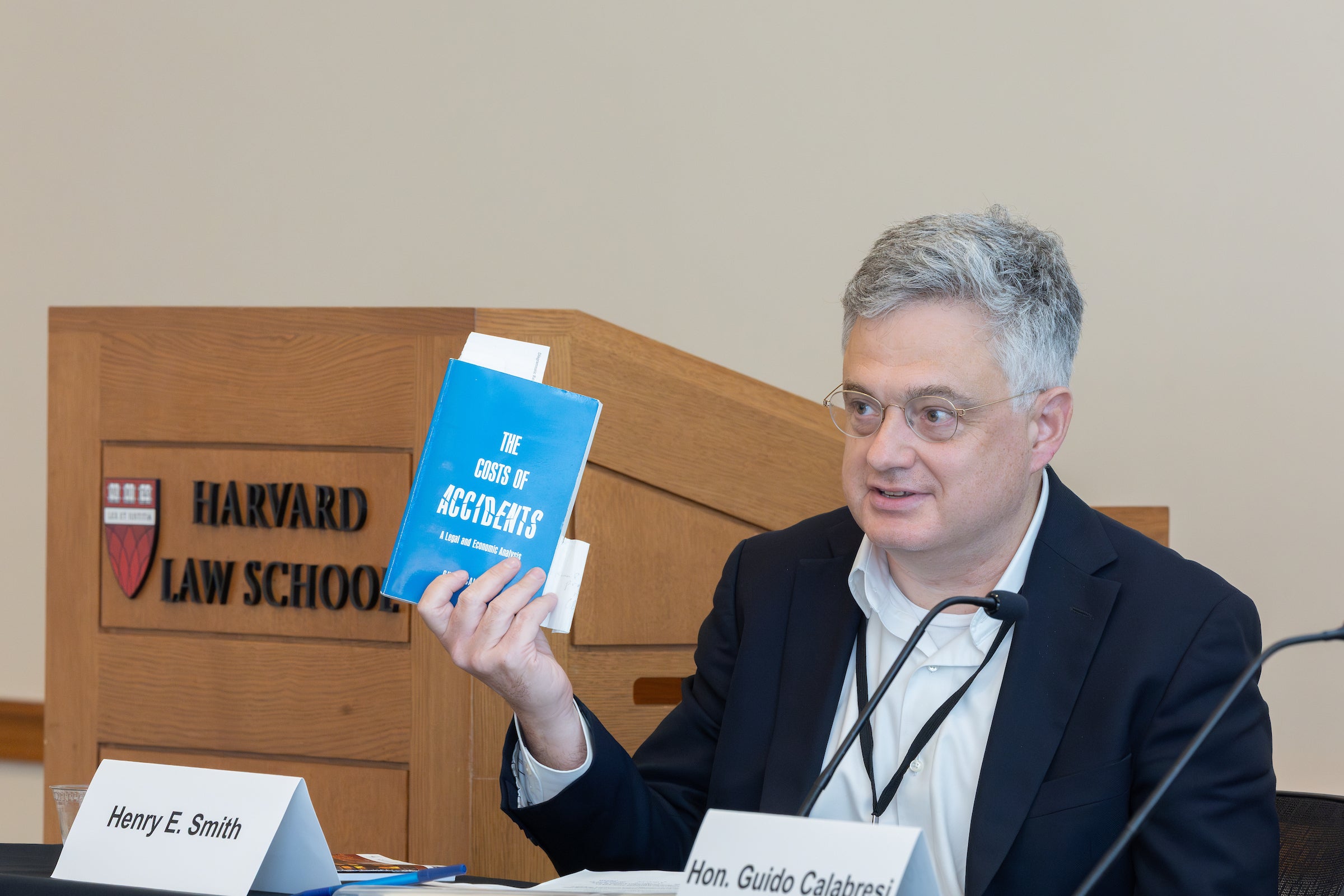
“This event has been a long time coming,” said Goldberg, now Harvard’s Morgan and Helen Chu Dean and Professor of Law, in his opening remarks for the conference. “Harvard Law School has long been home to scholars who have had important and influential things to say about obligations — think of [Professors] Story, Greenleaf, Langdell, Holmes, Ames, Williston, Seavey, Dawson, Fuller, Kennedy, Fried, and many others — so it is really an apt venue for these proceedings, and it is especially gratifying to me to be able to put on this genuinely international conference.”
A fresh examination of Calabresi’s 1970 text was among the highlights of this year’s gathering, made more special by the presence of Calabresi himself, now Sterling Professor Emeritus at Yale and a member of the U.S. Court of Appeals for the Second Circuit.
Moderated by Smith, the panel also included Professors Keith Hylton ’89 of Boston University, Gregory Keating ’85 of the USC Gould School of Law, and Catherine Sharkey of New York University. Each was invited to expand on the concepts of Calabresi’s classic text.
“All law is both public and private, and it is nonsense not to think of it as both,” Calabresi told the audience. By this he meant that, even though areas such as contract and tort law primarily address ‘private’ interactions of individuals and firms, how they do so has ‘public’ effects by, for example, helping to determine how much product manufacturers will invest in ensuring consumers’ safety.
“If you say that torts is private, then somebody has to talk about the sum of the accident costs and their avoidance, and what that does in the world,” he said. “Similarly, when people say it’s only public, then somebody has to talk about what happens in an individual case when you have people before you.”
His book, he further explained, concentrated mainly in the public realm because it had been widely ignored until then. “It was not trying to describe the world; it was talking about how things should be.” Its economic analysis of the law of accidents aimed to move the focus from individual lawsuits to the core systemic, structural question of who is best positioned to identify and take safety precautions, and how the law can incentivize them to do so.
Smith recalled attending Calabresi’s torts classes at Yale and displayed his own copy of ‘The Costs of Accidents’ — which still had the 1993 Yale Bookstore receipt inside. At the time, he recalled, “the Yale Law School was imbued with legal realism — it was still in the air and you could almost cut it, and Guido was a big part of that. When I read the book, I realized that legal realism was still very much alive, and that’s [something] I appreciate more deeply now. And when I read the book, I was very much struck, at least at first glance, by how external the perspective is.”
Hylton recalled encountering Calabresi’s book, as well as Harvard Law School Professor Frank Michelman’s contemporary review of it, while still a graduate student at MIT. He cited the influence it had on both his own career and the study of law overall.
“‘The Costs of Accidents’ is foundational in my view for economic analysis of law,” Hylton said. “If you were a philosopher king and you decided what does the law have to do, what is the objective function that you would set — and Guido says, you want to minimize accidents, plus the cost of avoiding accidents, plus the administrative costs. And that’s pretty much the objective function that explains so much of economic analysis of the law today. So, there it is, right there in 1970.”
Keating and Sharkey both dug into issues raised by Calabresi’s work, respectively the legal and economic implications of altruism and the insurability of risk. The latter, said Sharkey, has “become embedded in actual tort doctrine, namely the way in which judges and courts, when they’re thinking about whether to expand or contract duties, take into account the insurability of risk.”
This process, she said, has gained strength since the book’s appearance. “In that 55-year framework, the way in which these normative — one could say instrumental — policy-based economic factors have become imbued in tort doctrine and structure, I think, is really phenomenal.”
Keating chose to focus on a concept that Calabresi examined in a more recent book, “The Future of Law and Economics”: The relation of law and economics to altruism. He noted Calabresi’s discussion of the charitable tax deduction. “What you see here is a place where the law is both ends and means, both constitutive and instrumental … The good that you realize here couldn’t be realized without the legal system because it’s not just giving, it’s giving money as part of a system that you realize will function as a charitable system.” Calabresi’s work, he said, plays a key role in understanding how the law helps create meaning and make possible certain valuable practices.
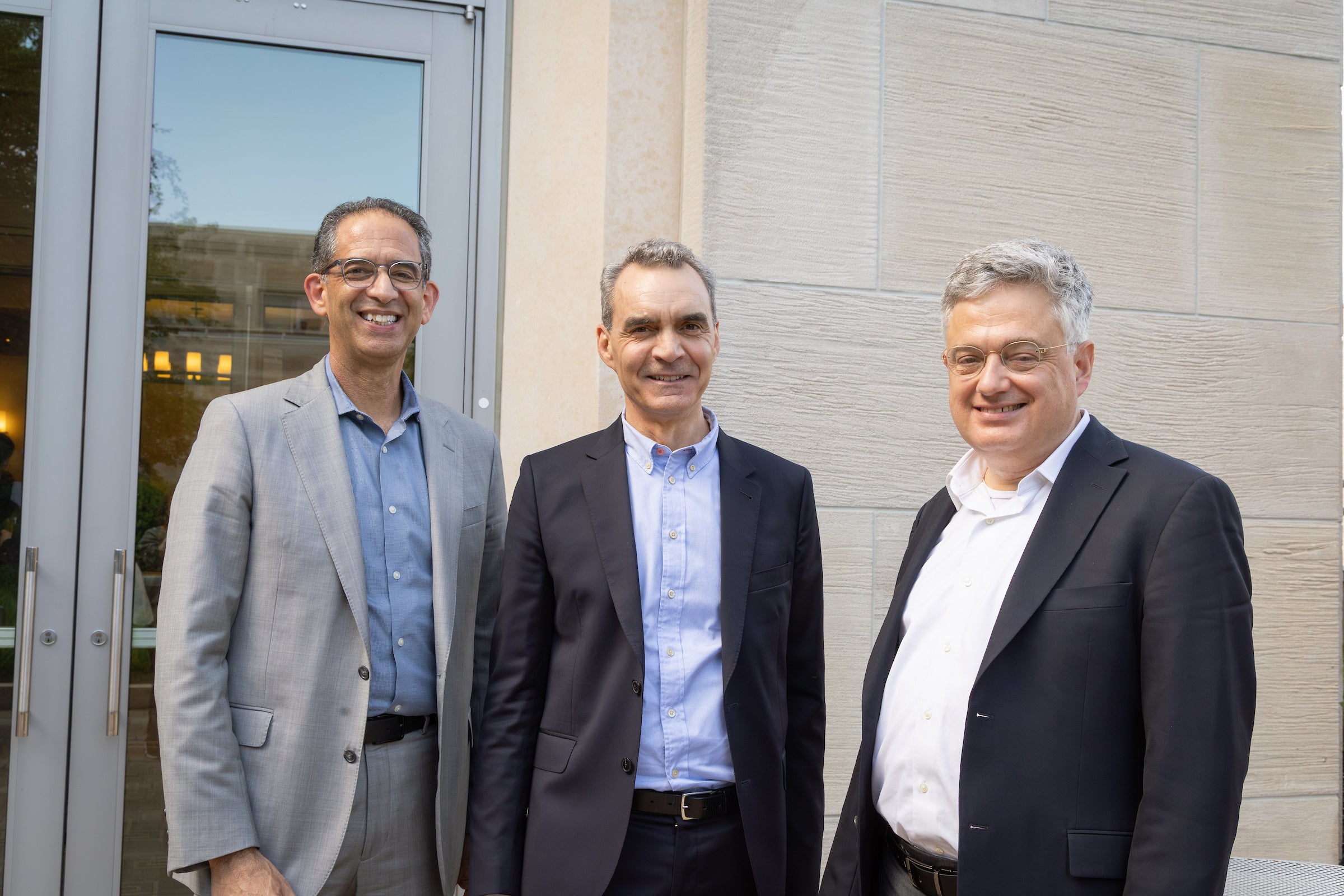
During the closing conference plenary, Sarah Worthington, Downing Professor Emeritus of the Laws of England and former director of the Cambridge Private Law Centre at the University of Cambridge, gave her reflections on the Obligations series and this year’s event, bringing together the conference theme and the diverse papers presented.
Describing the Obligations conference series as “the best private law conference in the world,” Worthington said the series acquired that reputation because the conferences’ designated themes are broad enough to challenge participants to consider their work in different ways. “I think lots of you, like me, will find that each time you’re made to do that, you think very, very profitably about your own work through a different framework and a different lens,” said Worthington. “So each time I’ve spoken at these conferences, that’s happened. And I can almost track on my cv the leaps in my thinking, my intellectual development, that’s been stimulated by these conferences. That’s special — and that’s unique.”
In his closing remarks, Professor Andrew Robertson isolated multiple dimensions of the conference’s theme, noting that it had been invoked by participants to capture ‘internal’ and ‘external’ perspectives on private law, as well as viewpoints from within and outside the United States. This prompted Goldberg to explore the limits and use of such metaphors, and to point out that it needs to be done carefully.
“One of the most heartening things about this conference … is that the goal overwhelmingly and uniformly, in every session I’ve been in, is to advance knowledge by moving beyond mere labels and metaphors loosely used,” Goldberg said. “I think it’s about sharpening our ideas; I think it’s about locating more precisely our points of disagreement which is exactly what we should be doing at a gathering like this. So, cheers to inside and outside, and cheers to obligations.”
Want to stay up to date with Harvard Law Today? Sign up for our weekly newsletter.
